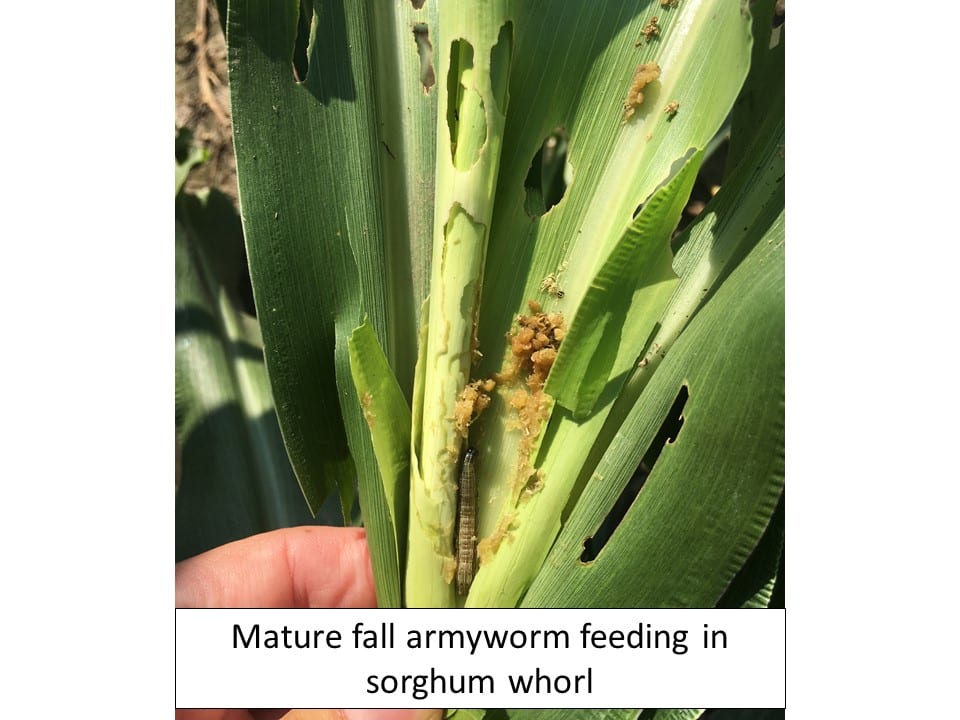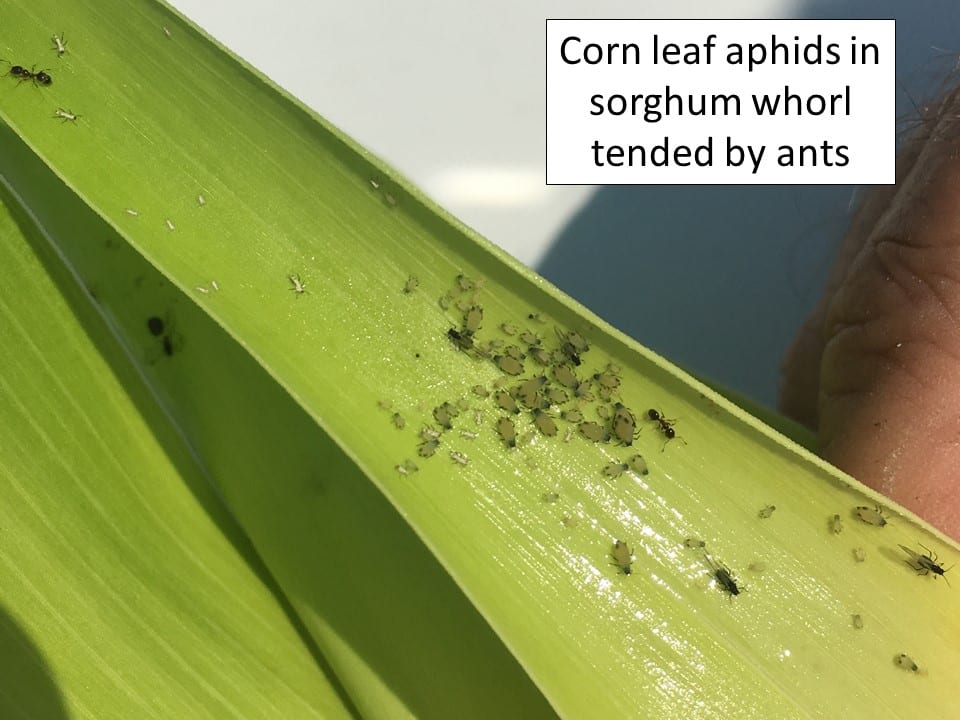–by Dr. Jeff Whitworth and Dr. Holly Davis
‘Ragworms’, mostly fall armyworms but a few corn earworms (sorghum headworms) as well, continue to cause considerable concern due to the very ragged looking leaves their feeding produces. These worms are present every year, to a greater or lesser extent, but this year does seem to be a good year for them. However, this whorl-stage feeding activity really has little to very little negative impact upon the plants, nor does it reduce yield. Most of the plants we examined in north central Kansas had feeding damage only – no worms, or a mature larva which had completed most of its feeding. Therefore, insecticide application will be a waste of time, money, and will kill any beneficials which may be present.
As sorghum starts to reach reproductive stages, the developing kernels will be vulnerable to attack by the next generation of fall armyworms and corn earworms (sorghum headworms). Between flowering and soft dough these larvae can cause about 5% loss/worm/head. Sampling needs to be conducted carefully and in a timely manner during this window.
Corn leaf aphids continue to be common in sorghum whorls and are often tended by ants for their honeydew. Beneficials are still plentiful and corn leaf aphid populations do not seem to be increasing.
For more information relative to sorghum insect management, please see the 2018 Sorghum Insect Management Guide: https://www.bookstore.ksre.ksu.edu/pubs/mf742.pdf


